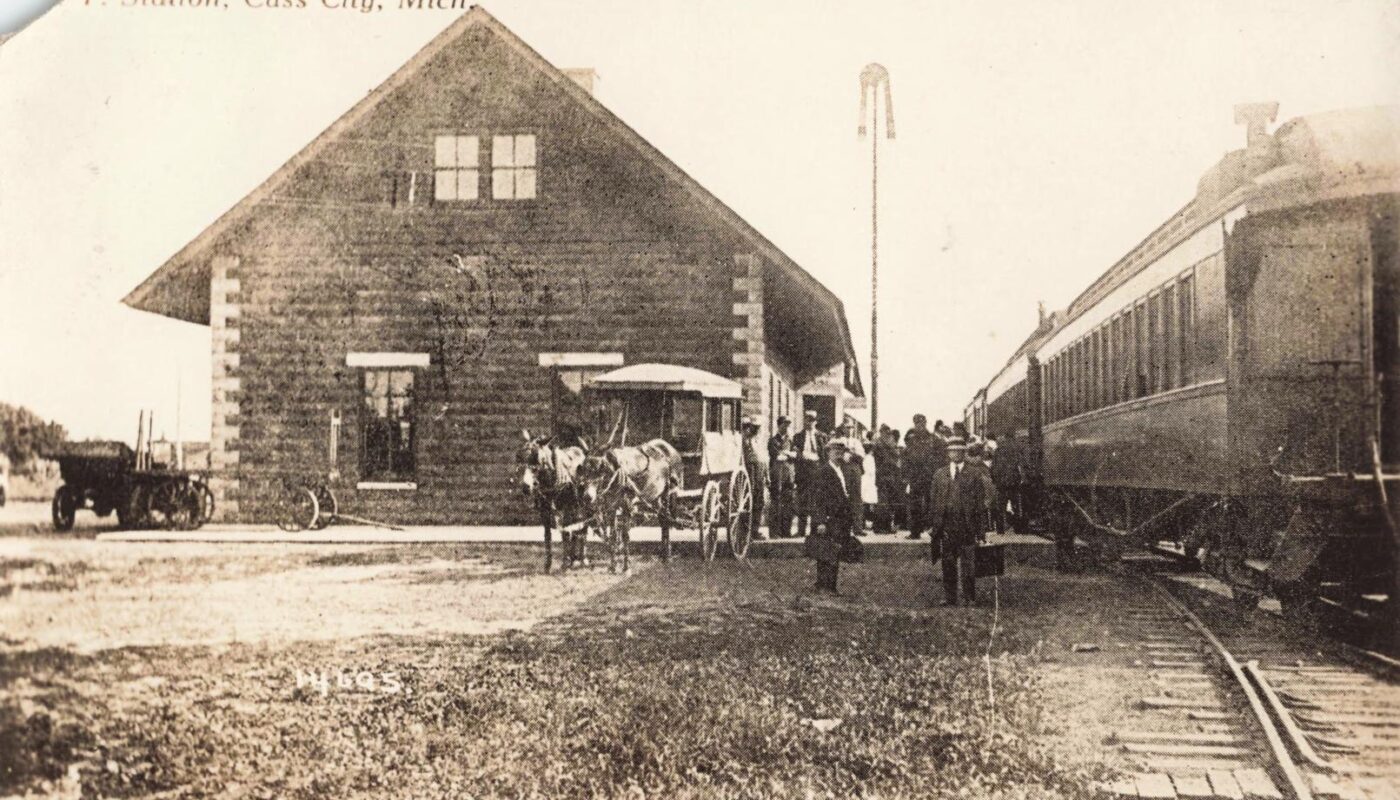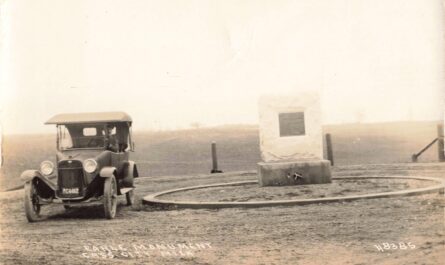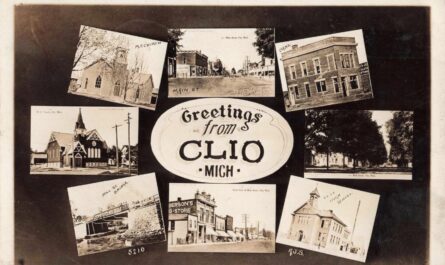Cass City, Michigan, sits quietly in the Thumb region, but its history tells the story of a town that mattered far beyond its size. Founded along the Cass River in the mid-1800s, the village grew into a hub of farming, industry, and small-town community life.
By the early 1900s, Cass City had one of the widest Main Streets in Michigan, a modern hospital, and a condensed milk plant that tied it to national markets. Generations of families lived, worked, and raised children here, leaving behind stories of everyday life, local progress, and even national achievement. The history of Cass City Michigan is more than dates and buildings—it’s the narrative of a community that thrived in the heart of the Thumb.
Table of Contents – History of Cass City Michigan
History of Cass City Michigan
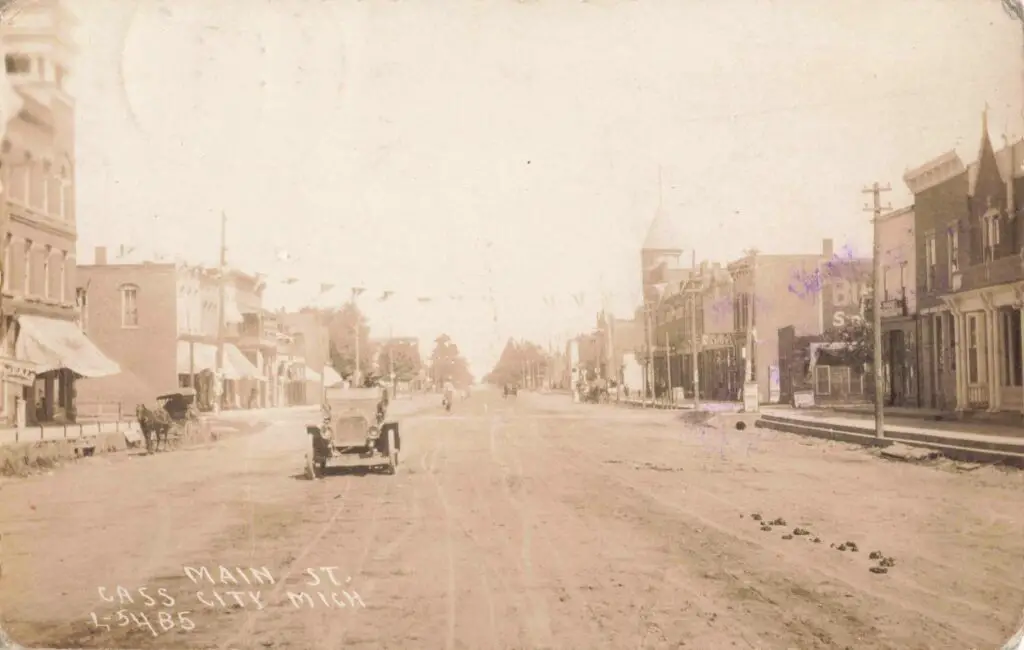
Cass City, Michigan, has a rich history rooted in Michigan’s Thumb region. The story began in the 1850s with the Cass River. A sawmill was built on the river in 1851, drawing in lumber workers and settlers. By 1855, several farming families had staked claims in the area. The name “Cass City” was chosen after the Cass River, itself named for Lewis Cass, Michigan’s 19th-century territorial governor.
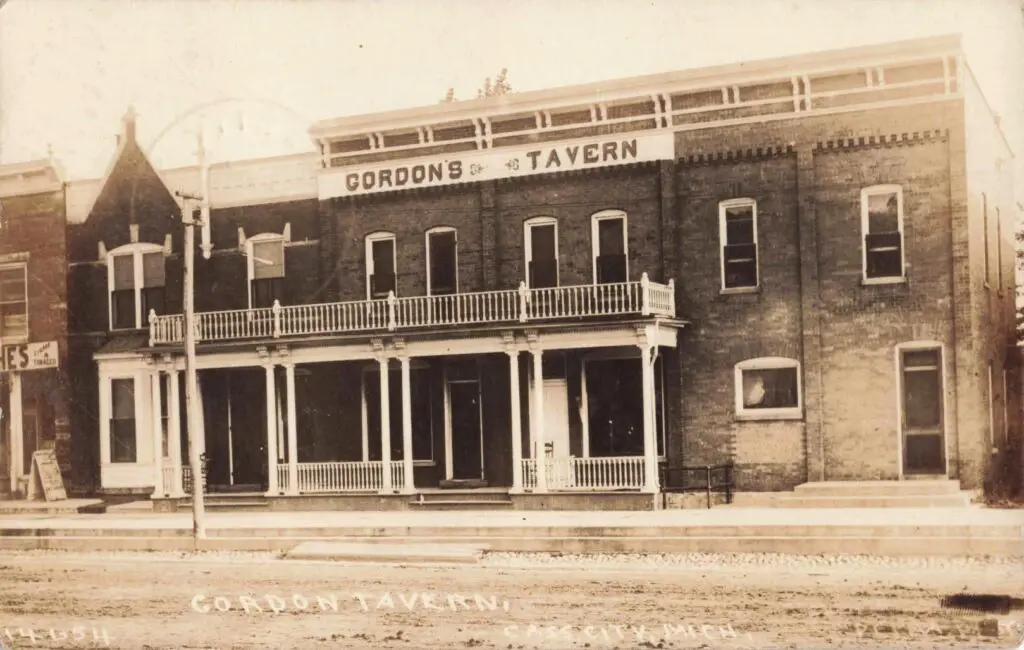
Over the next few decades, the little community grew quietly. In 1865, one source notes the area’s first real settlement formed around a lumber camp. The village took official shape when it was platted and incorporated in 1883. That same year, the Cass City House – a two-story brick hotel – opened on Main Street. For early residents, it served as a gathering place where travelers and locals mingled, marking the transition from pioneer outpost to organized village.
Early Growth and Landmarks
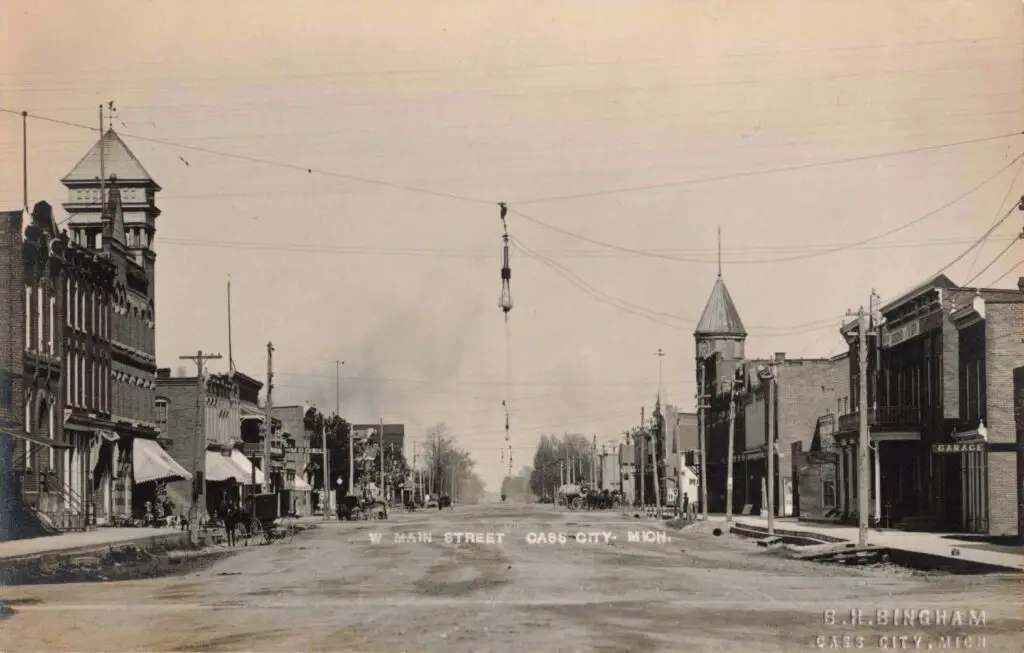
By the turn of the 20th century, Cass City’s wide Main Street was lined with businesses. Photo postcards from around 1900 show rows of shops: a hardware store, a bakery, Wood’s Drug Store, and the opera house where people watched performances. (In fact, Cass City is remembered for having one of the widest main streets in Michigan, giving a sense of space to the village center.)
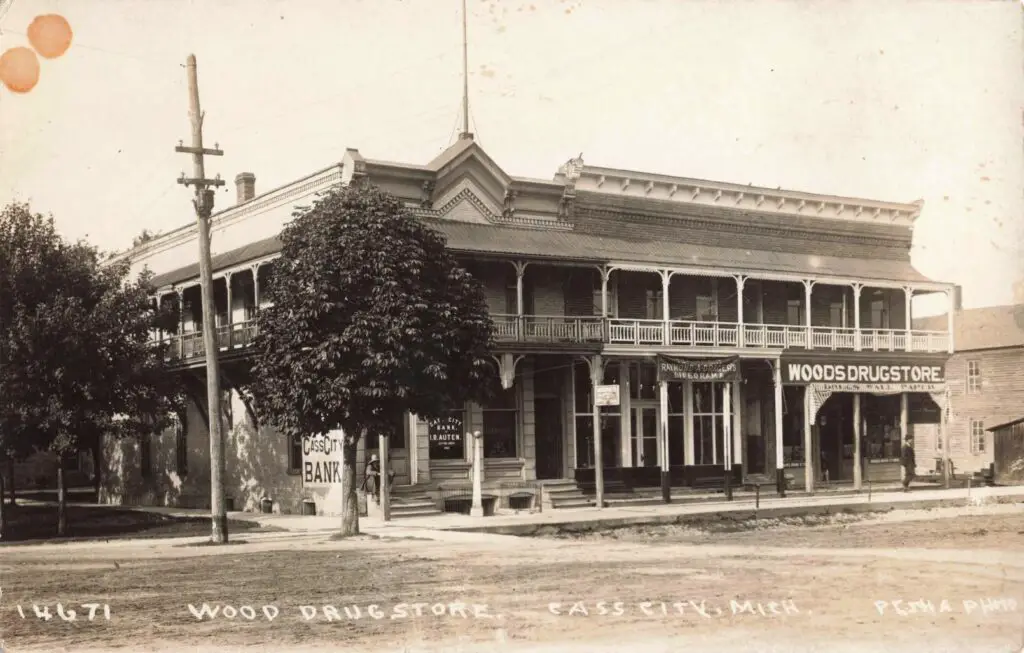
Agriculture was the lifeblood of Cass City’s economy. Surrounding farms grew wheat, beans, and later sugar beets, and also raised dairy cattle. Local elevators like the Cass City Grain Company collected and shipped grain by rail. As an example of the town’s success, Cass City Grain merged with a larger Michigan Bean Company in 1930 to strengthen its market.

One of the grand landmarks of early Cass City was the hospital built in 1906. Dr. Daniel P. Deming constructed Pleasant Home Hospital on Seeger Street, a modern facility with electric lights and piped water – a novelty for rural Michigan at that time. The hospital allowed for births and surgeries to happen locally rather than at a distant location. It became an essential part of the community, where many residents were born and cared for.
Unfortunately, Dr. Deming died in 1913 from a work-related infection (just as antibiotics were not yet available). The hospital he built remained in service until 1960, when a new county hospital replaced it. Pleasant Home Hospital is remembered fondly in Cass City history as a sign of progress and care in the village.
Industry and Farms
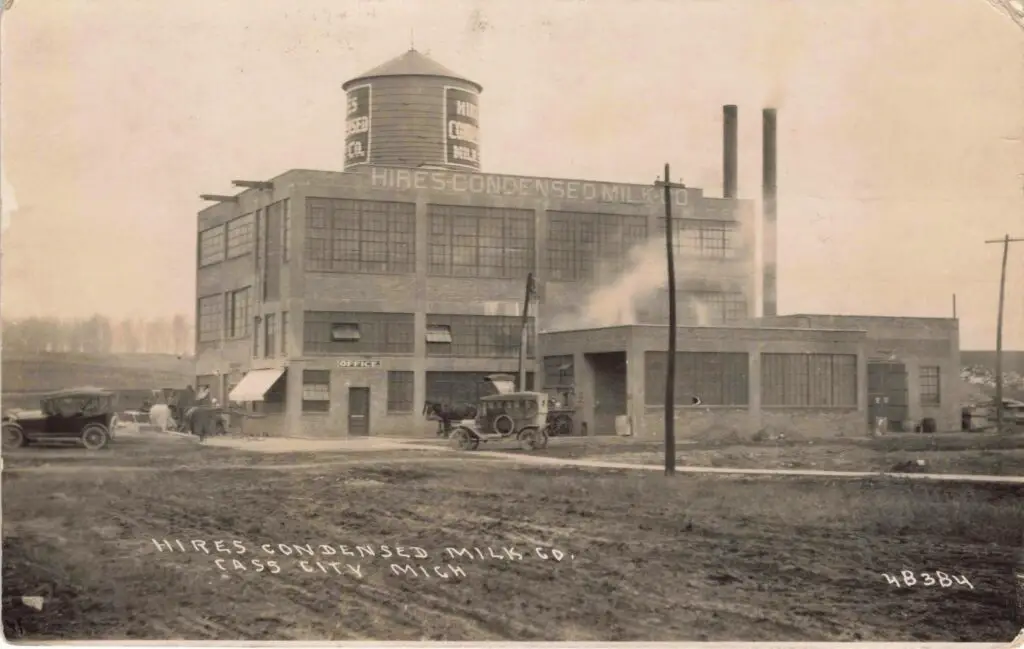
Cass City’s location made it a natural hub for local industry. In 1917 the Hires Condensed Milk Company opened a plant in town. This factory processed gallons of milk from area farms into shelf-stable condensed milk – a vital product in an era before everyone had home refrigeration. A few years later, the Swiss company Nestlé purchased the plant and operated it as Nestlé Farm Products. Nestlé continued making milk products here until 1953. The factory provided jobs for Cass City families and tied the village to national markets. After Nestlé closed the plant, the building became a brownfield for many years, but it was eventually cleaned up for new businesses, bringing jobs back to Main Street.

Farming remained strong around Cass City. Historians note that fields of corn, wheat, and sugar beets stretched across Elkland Township. Dairy cows dotted the countryside, supported by local creameries and milk routes. Grain elevators stood tall on railroad sidings – for instance, postcards show an elevator at the depot, a sign of Cass City’s grain shipping.
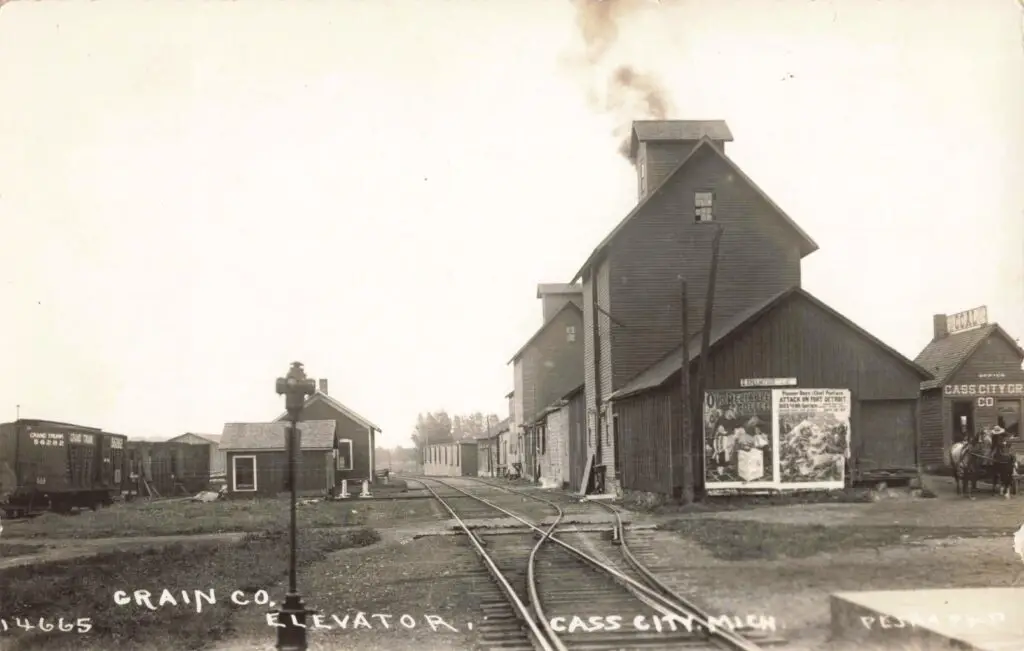
During the 1930s Depression, Cass City and neighboring farms suffered crop price crashes and drought. Local co-ops tried to help farmers sell beans and corn, but times were hard. By World War II and after, farming technology improved; tractors replaced horses, and farm output increased. Cass City agriculture adapted over time, but it always remained at the heart of the town’s story.
Community Life
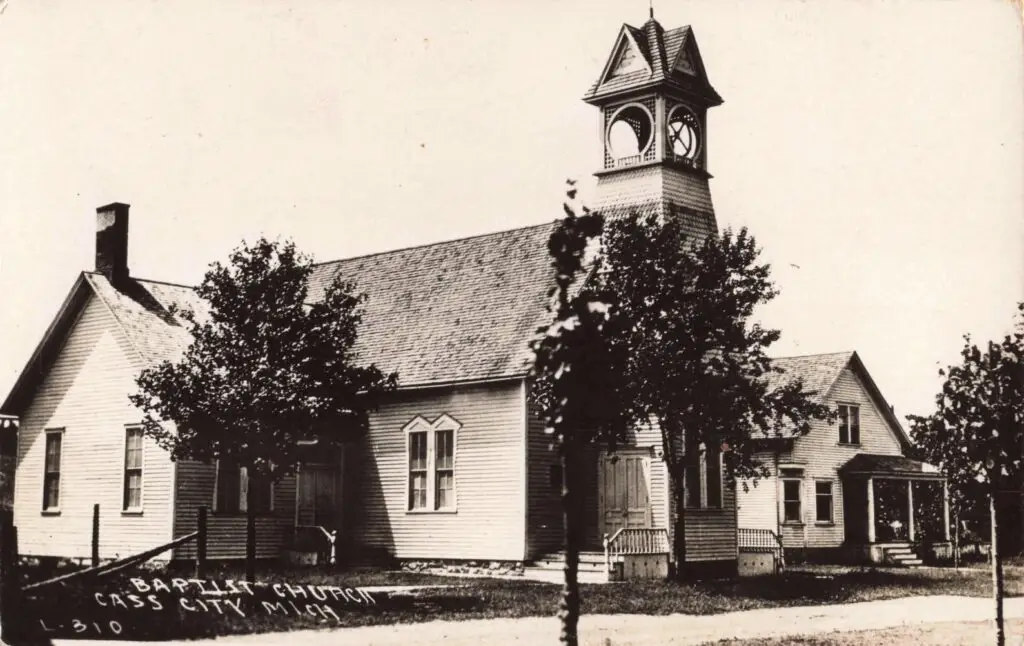
The social history of Cass City centers on its tight-knit community. Families attended churches built in the late 1800s and early 1900s. For example, the First Baptist Church in Cass City was active by the early 1900s. Children participated in the village school and often later went to a local agricultural college or found work in the region. On summer weekends, Main Street might host parades or fairs, and the school’s gym held basketball games and dances.
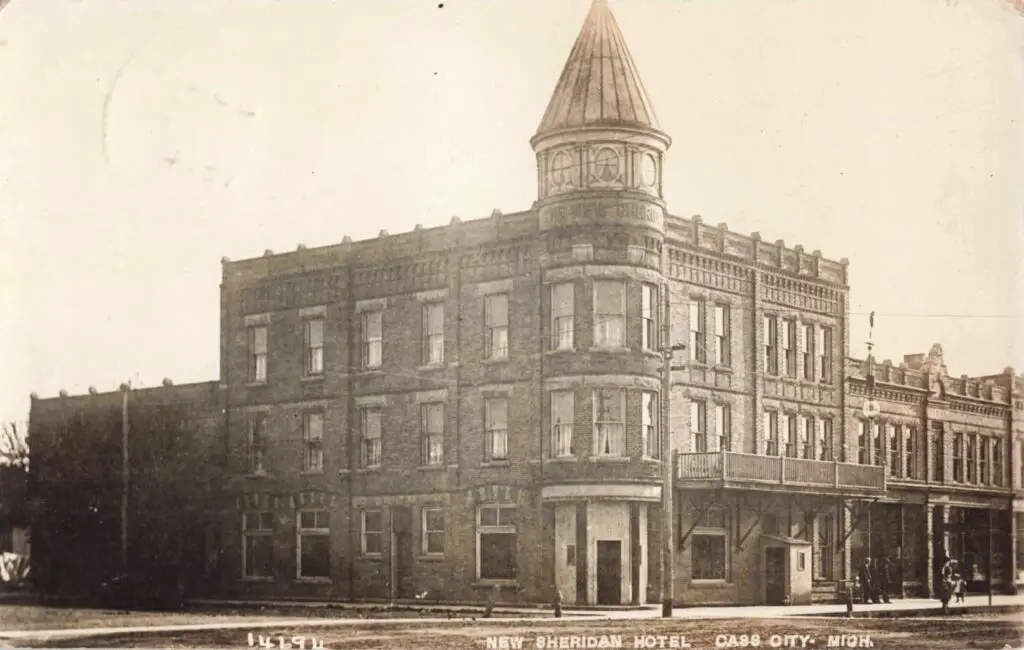
An interesting note from Cass City lore: in 1923, people danced at gatherings in the new school gymnasium, which doubled as a roller rink on weekends. Veterans groups, women’s clubs, and town councils all grew as Cass City matured. There was a community newspaper, the Cass City Chronicle, documenting local weddings, church events, and farm news. Through the years, Cass City people relied on each other – swapping labor during harvests, raising money for new schools, and celebrating July 4th together.
Notable People
Despite its small size, Cass City produced some people of national renown. Leland “Larry” MacPhail was born here in 1890. MacPhail became an innovator in baseball, introducing night games and other changes when he was an executive with the Reds and Yankees. He was inducted into the Baseball Hall of Fame in 1978.
Another Cass City native, Brewster H. Shaw (born 1945), graduated from Cass City High School and later flew as a commander on three Space Shuttle missions. Shaw was inducted into the Astronaut Hall of Fame in 2006. Sports and space – two very different worlds – both have a Cass City connection. Locally, everyday heroes ranged from farming entrepreneurs to teachers; one early newspaper article even noted Dr. Deming and a Ms. Keller (a local teacher) in the same breath. While names like MacPhail and Shaw are exceptional, most of Cass City’s legacy was built by ordinary folk whose names aren’t recorded in history books but who kept the town thriving.
Later Developments and Today
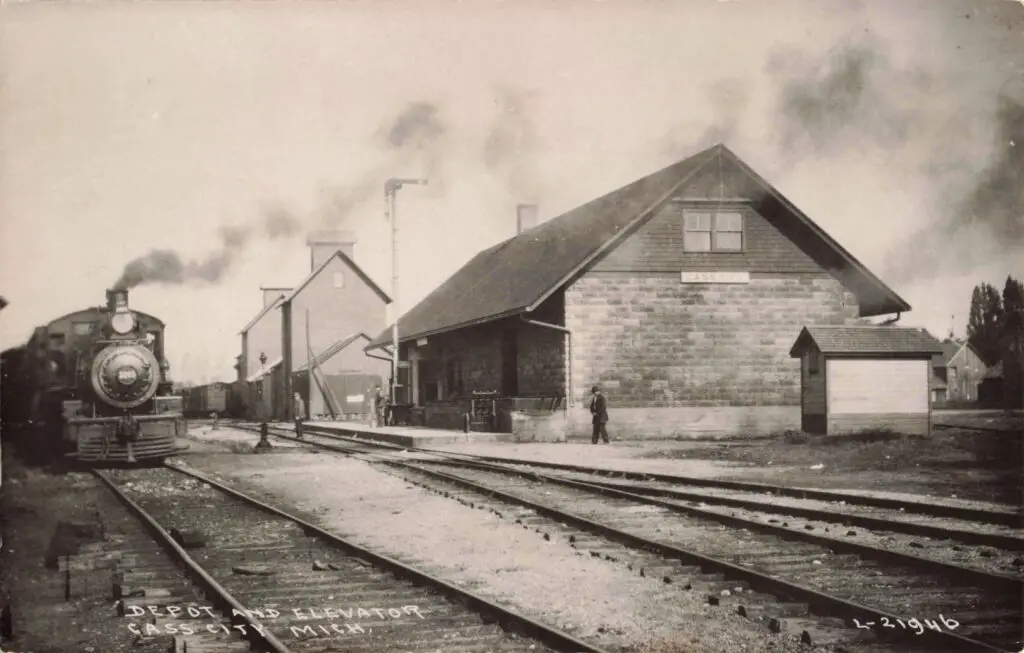
After 1950, Cass City remained the seat of Elkland Township in Tuscola County. Highways and cars changed travel, and kids could go to high school in nearby towns, too. Over the decades, the population held steady at around 2,500. Many original industries closed or changed: the Opera House became a dance hall, factories were repurposed, and several banks merged.
The old railroad depot closed in mid-century when passenger trains stopped. By the 1970s and ’80s, Cass City was primarily a service center for area farms and retirees. In recent years, there has been an effort to preserve history: the Cass City Historical Society displays old photos, and events like an annual “Cruise-In” celebrate classic cars on Main Street. The town still cherishes stories of its past – from the first settlers chopping trees in the 1850s to veterans of later wars.
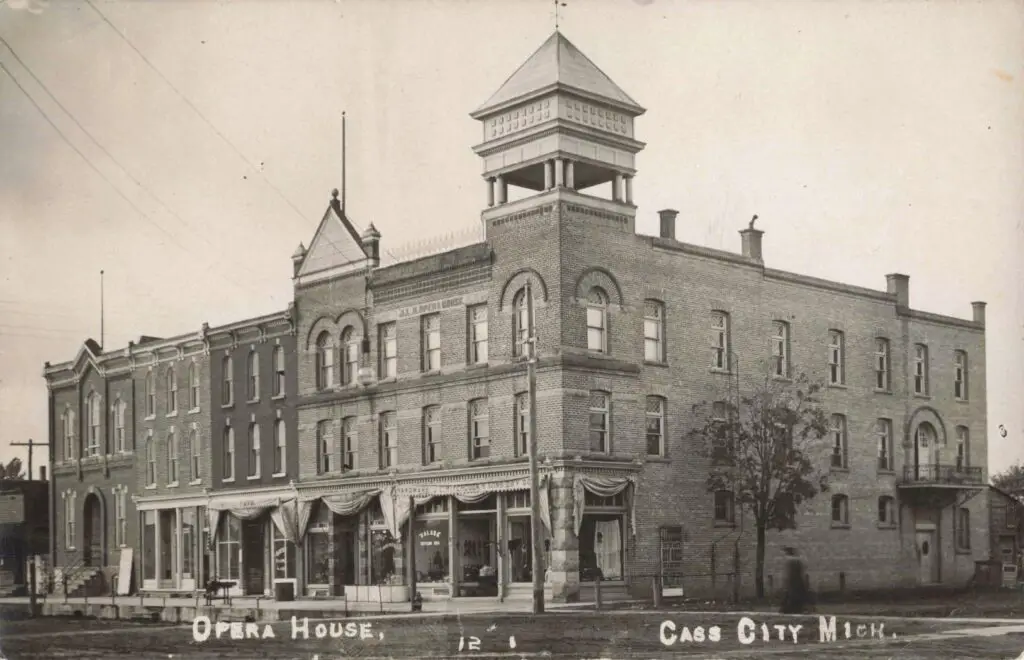
Cass City’s history is a slice of Michigan’s broader story. It began with logging and homesteading, evolved into farming and local industry, and produced people who went on to extraordinary achievements. Today, visitors might see a modern school, a hardware store, and quiet streets. But every building and field has a tale: the wide red-brick street recalls the freight wagons; the tall grain elevator silhouette recalls harvest seasons; the 1883 hotel’s façade recalls Cass City’s incorporation year. In studying the history of Cass City, Michigan, we find that even small towns can have big stories.
Video – What Makes Cass City, Michigan, Noteworthy
What makes Cass City noteworthy is not one single event, but a tapestry of many ordinary moments that add up. It is notable because it went from a single sawmill to an incorporated village in just a generation; because it built one of the first hospitals in rural Michigan; because its factories once connected it to global food networks; and because its children reached the pinnacles of sport and science
The high school alumni list might be typical until one sees the astronaut’s name among them. The downtown storefronts look familiar, but photos reveal fashions from a century ago. Cass City’s roots in farming and community resilience (not using that word, but yes) reveal why the village lasted while others faded.
When you hear this story in our video, remember: we’re not just recounting facts; we’re sharing Michigan Moments. Seeing a 1920s grocery store window in Cass City is like a portal to the past – it might surprise you how much has changed, or how much people’s lives then were like lives now. So the next time you drive through Cass City, look closely at those century-old buildings and the broad street. Listen for the voices of storekeepers or the rumble of a steam train from old days. We hope this tease has made you curious about Cass City’s past. Watch the full episode to go deeper into the history of Cass City, Michigan, and discover more stories waiting there.

